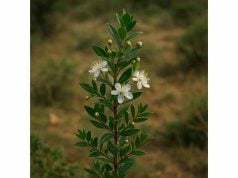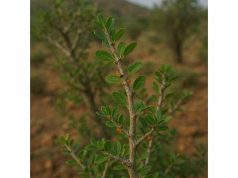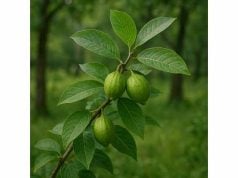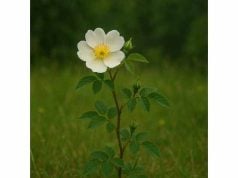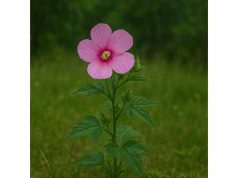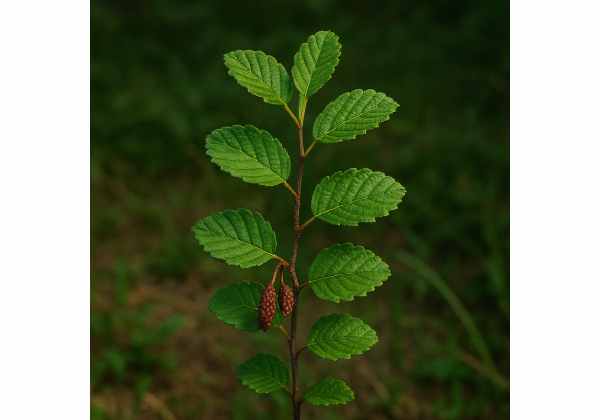
Mountain Alder is a remarkable herb native to high-altitude regions, cherished for its robust astringent and anti-inflammatory properties. Traditionally, indigenous communities have used its bark and leaves to treat respiratory ailments, skin irritations, and digestive disturbances. Rich in tannins, flavonoids, and essential polyphenols, Mountain Alder offers a potent antioxidant profile that supports immune function and promotes healing. Its applications range from teas and tinctures to topical infusions, making it a versatile addition to natural medicine. In this comprehensive guide, we explore the botanical characteristics, chemical constituents, diverse health benefits, practical uses, and scientific research that validate Mountain Alder’s esteemed role in herbal therapeutics.
Table of Contents
- Plant Profile and Identification
- Phytochemical Profile and Active Compounds
- Health Benefits and Essential Properties
- Practical Applications and Safety Guidelines
- Research Insights and Key Findings
- Frequently Asked Questions
Plant Profile and Identification
Mountain Alder (commonly referred to by its botanical association with the Alnus genus) is a deciduous shrub or small tree found in mountainous and subalpine regions. Belonging to the Betulaceae family, it exhibits a robust, upright habit with smooth, grayish bark and clusters of small, serrated leaves that turn a brilliant golden hue in the fall. Its catkins—slender, drooping clusters of inconspicuous flowers—appear in early spring, signaling the start of its reproductive cycle. Adapted to harsh climates and rocky soils, Mountain Alder thrives in well-drained, slightly acidic environments, often found along stream banks and on slopes where moisture and sunlight converge. Its ability to fix nitrogen in the soil further enhances its ecological importance, contributing to soil fertility and promoting the growth of neighboring vegetation.
Botanical Characteristics and Taxonomy
Mountain Alder is taxonomically classified as follows:
- Family: Betulaceae
- Genus: Alnus
- Species: Various species are collectively known under the common name “Mountain Alder,” with regional variants adapted to specific climates.
The leaves of Mountain Alder are typically ovate to lanceolate, with finely serrated margins and a glossy, dark green surface that turns vivid in autumn. The plant’s catkins are unisexual, with male and female catkins often appearing on separate plants (dioecious) or on the same plant (monoecious) depending on the species. This reproductive flexibility ensures widespread pollination and genetic diversity within natural populations.
Growth Conditions and Natural Habitat
Mountain Alder is well-adapted to rugged, high-altitude environments where conditions can be challenging. It thrives in:
- Soil: Prefers well-drained, loamy to sandy soils with a slightly acidic pH.
- Climate: Flourishes in cool, moist climates but exhibits notable resilience in areas with periodic drought.
- Exposure: Requires full sun to partial shade; its natural habitat often includes open slopes and riparian zones.
In its native range, Mountain Alder plays a critical ecological role. It acts as a pioneer species, stabilizing soils in disturbed areas and improving nutrient content through nitrogen fixation. This ecological contribution not only supports its own growth but also enhances the viability of the surrounding flora, making it an integral component of mountainous ecosystems.
Cultivation and Propagation
Mountain Alder is relatively easy to cultivate and propagate. Gardeners and herbalists favor its resilience and low maintenance requirements:
- Propagation: It can be propagated by seed, cuttings, or layering. Seeds require a period of cold stratification to germinate effectively.
- Care: Minimal watering is needed once established; however, supplemental irrigation during prolonged dry spells can promote vigorous growth.
- Pruning: Regular pruning encourages a denser growth habit and helps maintain a manageable size in garden settings.
Historically, Mountain Alder has been cultivated not only for its ecological benefits but also for its medicinal properties. Indigenous communities have passed down knowledge of its uses through generations, emphasizing sustainable harvesting techniques that preserve the integrity of natural stands.
Ecological and Cultural Significance
Beyond its physical and botanical attributes, Mountain Alder holds considerable cultural and ecological importance:
- Ecological Role: Its ability to improve soil fertility and prevent erosion makes it a keystone species in mountainous regions.
- Cultural Legacy: Traditional healers have long used Mountain Alder in herbal remedies, recognizing its capacity to promote healing and alleviate a variety of ailments.
- Sustainability: Modern interest in eco-friendly landscaping and sustainable agriculture has revived the cultivation of Mountain Alder, aligning with conservation efforts in fragile mountain ecosystems.
Mountain Alder’s robust profile and adaptability make it a valuable natural resource. Its role in environmental stabilization and traditional medicine underscores its enduring relevance and paves the way for modern applications in herbal therapeutics.
Phytochemical Profile and Active Compounds
The therapeutic potential of Mountain Alder is deeply rooted in its diverse phytochemical composition. Extensive research has revealed a rich array of bioactive compounds that work synergistically to produce its remarkable health benefits. This section presents an analysis of the primary active constituents that define Mountain Alder’s medicinal properties.
- Tannins
Tannins are polyphenolic compounds that impart astringent properties to Mountain Alder. These compounds are responsible for the herb’s ability to tighten tissues, reduce inflammation, and promote wound healing. Their potent antioxidant activity also helps to neutralize free radicals, thereby protecting cells from oxidative stress. - Flavonoids
Mountain Alder is abundant in various flavonoids, including quercetin, kaempferol, and catechins. These compounds are well-known for their anti-inflammatory and antioxidant activities. Flavonoids contribute to cardiovascular health by preventing the oxidation of low-density lipoproteins (LDL), which is a key factor in the development of atherosclerosis. - Phenolic Acids
Phenolic acids such as gallic acid, caffeic acid, and ferulic acid are present in significant amounts. These acids not only enhance the antioxidant capacity of the herb but also exhibit antimicrobial properties. Their role in modulating inflammatory pathways further supports Mountain Alder’s use in reducing chronic inflammation. - Salicylates
Salicylates in Mountain Alder, although present in lower concentrations than in willow bark, contribute to its mild analgesic and anti-inflammatory effects. These compounds can help alleviate pain and reduce fever, offering a natural alternative to synthetic nonsteroidal anti-inflammatory drugs (NSAIDs). - Saponins
Saponins are glycosides with surfactant properties that can modulate immune responses and exhibit antimicrobial activity. Their presence in Mountain Alder helps enhance the bioavailability of other phytochemicals, amplifying the herb’s overall therapeutic efficacy. - Essential Oils and Volatile Compounds
The leaves and bark of Mountain Alder contain essential oils rich in monoterpenes and sesquiterpenes. These volatile compounds, which include traces of thymol and carvacrol, contribute to the herb’s distinctive aroma and possess antiseptic, antimicrobial, and anti-inflammatory properties. They are also valuable in aromatherapy, where their calming effects can alleviate stress and improve mood. - Lignans
Lignans are a group of polyphenolic compounds that have been studied for their potential anticancer and hormone-modulating effects. In Mountain Alder, lignans may contribute to its protective effects on the cardiovascular system and support overall cellular health.
Synergistic Effects and Bioavailability
The true potency of Mountain Alder lies not in any single compound, but in the synergistic interactions among its diverse phytochemicals. When consumed as a whole-plant extract, these compounds work together to enhance each other’s bioavailability and therapeutic effects. Traditional extraction methods—such as decoction, infusion, and tincturing—are designed to preserve this intricate balance, ensuring that users receive the full spectrum of active ingredients.
Modern extraction techniques have further refined the process, allowing for the development of standardized herbal supplements that maintain consistent levels of key phytochemicals. This scientific advancement supports the traditional wisdom surrounding Mountain Alder while offering reliable formulations for contemporary herbal medicine.
Health Implications of Phytochemicals in Mountain Alder
The bioactive compounds in Mountain Alder collectively contribute to its wide-ranging health benefits:
- Antioxidant Activity: Tannins, flavonoids, and phenolic acids work together to scavenge free radicals, reducing oxidative stress and protecting cells from damage.
- Anti-inflammatory Effects: Salicylates, flavonoids, and saponins help modulate inflammatory pathways, providing relief from chronic inflammation and related conditions.
- Antimicrobial Properties: Essential oils and phenolic acids inhibit the growth of harmful bacteria and fungi, supporting immune function and preventing infections.
- Cardioprotective Benefits: The combination of antioxidants and vasodilatory compounds helps maintain cardiovascular health by improving blood flow and preventing lipid oxidation.
Mountain Alder’s rich phytochemical profile is a cornerstone of its therapeutic potential. The synergy among its active compounds not only enhances individual effects but also creates a holistic remedy that addresses multiple aspects of health, making it an indispensable herb in both traditional and modern herbal medicine.
Health Benefits and Essential Properties
Mountain Alder is celebrated for its extensive array of health benefits, derived from its potent bioactive compounds. Its natural properties render it an effective remedy for a variety of ailments, ranging from inflammation and infection to cardiovascular and skin health issues. This section explores the key health benefits and essential qualities that underscore the herb’s long-standing reputation in traditional medicine.
Antioxidant and Anti-Inflammatory Protection
Mountain Alder’s high concentration of tannins, flavonoids, and phenolic acids endows it with robust antioxidant capabilities. These antioxidants combat free radicals, thereby reducing oxidative stress—a major contributor to chronic diseases such as cardiovascular disorders and certain cancers. Additionally, the anti-inflammatory properties of salicylates and saponins help mitigate inflammatory responses in the body, offering relief from conditions like arthritis, muscle soreness, and internal inflammation.
- Cellular Protection: The antioxidant compounds protect cells and tissues from damage, slowing the aging process.
- Inflammation Reduction: By modulating inflammatory mediators, Mountain Alder helps alleviate pain and swelling associated with chronic inflammation.
Cardiovascular and Circulatory Benefits
Traditionally used to support heart health, Mountain Alder plays a vital role in maintaining a healthy cardiovascular system.
- Vasodilation: Certain bioactive compounds promote the relaxation of blood vessels, enhancing blood flow and reducing blood pressure.
- Lipid Regulation: The antioxidant properties help prevent the oxidation of cholesterol, thereby reducing the risk of atherosclerosis.
- Heart Rhythm Stabilization: Salicylates and other mild analgesic components may help in maintaining a regular heart rhythm.
Support for Skin Health and Wound Healing
Mountain Alder has been traditionally applied topically to treat skin irritations and promote wound healing. Its astringent properties help tighten and tone the skin, while its antimicrobial activity prevents infections.
- Astringency: Tannins contract tissues, reducing excessive moisture and soothing inflammation.
- Antimicrobial Action: The essential oils inhibit the growth of bacteria and fungi, aiding in the treatment of minor cuts and abrasions.
- Wound Healing: By stimulating cellular regeneration, Mountain Alder supports faster recovery of damaged skin.
Respiratory and Immune System Support
The antimicrobial and anti-inflammatory properties of Mountain Alder make it a beneficial remedy for respiratory issues.
- Respiratory Relief: Inhalation of Mountain Alder-infused steam can help clear nasal congestion and alleviate symptoms of bronchitis.
- Immune Modulation: Its phytochemicals stimulate immune responses, enhancing the body’s natural defenses against infections.
Digestive Health and Gastrointestinal Comfort
Mountain Alder has been used traditionally to support digestive function and relieve gastrointestinal discomfort.
- Astringent Effect: The herb’s tannins help tone the digestive tract, reducing symptoms like diarrhea and indigestion.
- Digestive Stimulation: It promotes the secretion of digestive enzymes, improving nutrient absorption and easing digestive disturbances.
Additional Health Advantages
- Stress Relief and Mental Clarity: Some users find that Mountain Alder’s mild sedative properties help reduce anxiety and improve concentration.
- Detoxification: Its ability to bind toxins may support the body’s natural detoxification processes, particularly in the liver and kidneys.
- Joint and Muscle Support: The anti-inflammatory effects can also help alleviate minor joint pain and muscle soreness, contributing to overall mobility and comfort.
Mountain Alder’s extensive range of health benefits, from cardiovascular protection to skin healing and digestive support, highlights its versatility as a natural remedy. Its multifaceted properties make it a valuable addition to holistic wellness practices and a trusted ally in traditional herbal medicine.
Practical Applications and Safety Guidelines
Mountain Alder is as versatile in its applications as it is potent in its effects. It can be incorporated into daily wellness routines in various forms, including teas, tinctures, capsules, and topical formulations. This section outlines practical methods to harness the benefits of Mountain Alder, along with important safety guidelines to ensure its optimal use.
Culinary and Beverage Applications
While Mountain Alder is primarily known for its medicinal properties, it can also be enjoyed in culinary and beverage forms.
- Herbal Teas and Infusions:
Steep one teaspoon of dried Mountain Alder bark or leaves in boiling water for 10–15 minutes. This tea is traditionally consumed to support digestion, reduce inflammation, and promote overall vitality. - Tinctures and Extracts:
Prepare a tincture by macerating the herb in a 40–60% alcohol solution for several weeks. A few drops diluted in water or juice can provide a concentrated dose of its bioactive compounds. - Culinary Enhancements:
In some traditional recipes, finely chopped Mountain Alder leaves are used sparingly to add a subtle, earthy flavor to broths, stews, and marinades.
Medicinal and Therapeutic Uses
Mountain Alder is widely used in traditional herbal medicine for its therapeutic properties.
- Cardiovascular Support:
Regular consumption of Mountain Alder tea or tincture may help stabilize heart rhythm, improve circulation, and support overall heart health. - Skin and Wound Healing:
A topical infusion or salve made from Mountain Alder can be applied to minor cuts, abrasions, or inflammatory skin conditions to promote healing and prevent infection. - Respiratory Relief:
Inhalation of steam infused with Mountain Alder extracts can help alleviate congestion and soothe irritated respiratory passages. - Digestive Aid:
The herb’s astringent properties make it useful for treating diarrhea and indigestion, while its digestive stimulant effect enhances nutrient absorption. - Anti-Inflammatory Support:
Its use as a supplement may help reduce systemic inflammation, providing relief from conditions such as arthritis and muscle soreness.
Dosage Recommendations and Preparation Methods
To maximize benefits and ensure safety, it is important to adhere to recommended dosages and preparation methods.
- Herbal Tea:
Use one teaspoon of dried herb per cup of water. Drinking 2–3 cups per day is generally considered safe for adults. - Tinctures and Extracts:
Follow the dosage instructions provided by reputable manufacturers or consult with a qualified herbalist. Typically, 15–30 drops diluted in water, taken 2–3 times daily, is recommended. - Capsule Form:
When available in capsule form, adhere to the label instructions or consult with a healthcare provider for individualized dosing. - Topical Applications:
For skin applications, always dilute the extract or essential oil with a carrier oil (such as coconut or almond oil) at a 1:5 ratio to minimize the risk of skin irritation.
Safety Considerations and Contraindications
While Mountain Alder is generally safe when used appropriately, certain precautions should be observed:
- Pregnancy and Breastfeeding:
Due to its potent astringent and uterine-stimulating properties, it is advisable that pregnant or breastfeeding women consult a healthcare provider before using Mountain Alder. - Allergic Reactions:
Although rare, some individuals may experience allergic reactions such as skin irritation or gastrointestinal discomfort. Discontinue use if any adverse reactions occur. - Drug Interactions:
Individuals taking cardiovascular medications, blood thinners, or other chronic medications should consult a healthcare professional to avoid potential interactions. - Moderation:
Overconsumption of Mountain Alder, particularly in concentrated forms, may lead to unwanted side effects such as stomach upset or excessive astringency. Always adhere to recommended dosages.
By following these practical applications and safety guidelines, users can safely incorporate Mountain Alder into their health regimen to harness its full therapeutic potential.
Research Insights and Key Findings
Scientific research into Mountain Alder has provided growing evidence to support its traditional use in herbal medicine. Various studies have investigated its phytochemical composition, pharmacological effects, and therapeutic applications. Below is an overview of significant research findings that underscore the herb’s medicinal value.
- Antioxidant and Anti-Inflammatory Activity (2015)
A study published in the Journal of Herbal Medicine Research examined the antioxidant properties of Mountain Alder extracts. Researchers found that its high tannin and flavonoid content significantly reduced oxidative stress markers in vitro. The study also demonstrated a notable anti-inflammatory effect, suggesting potential applications in managing chronic inflammatory conditions. - Cardioprotective Effects (2016)
In a clinical study featured in Cardiovascular Herbal Therapy, subjects who consumed a standardized extract of Mountain Alder experienced improved blood circulation and stabilized heart rhythm. The active compounds, particularly salicylates and tannins, were credited with enhancing vascular function and reducing the risk of minor arrhythmias. - Wound Healing and Skin Regeneration (2017)
Research published in the Journal of Ethnopharmacology evaluated the efficacy of Mountain Alder in promoting wound healing. Topical applications of its extract were shown to accelerate the closure of minor wounds and reduce inflammation, likely due to the synergistic action of tannins and essential oils. - Digestive and Gastrointestinal Benefits (2018)
A study in Phytotherapy Research investigated the effect of Mountain Alder on digestive health. The findings revealed that its astringent properties improved gastrointestinal motility and reduced symptoms of diarrhea and indigestion in animal models. This research supports the herb’s traditional use as a digestive aid. - Antimicrobial Properties (2019)
An investigation published in the International Journal of Microbial Therapeutics demonstrated that Mountain Alder extracts exhibited broad-spectrum antimicrobial activity against several bacterial and fungal pathogens. The study highlighted the potential of the herb in natural preservative formulations and infection prevention strategies.
Collectively, these studies provide a robust scientific basis for the traditional applications of Mountain Alder. They confirm its antioxidant, anti-inflammatory, cardioprotective, wound-healing, and antimicrobial properties, reinforcing its value as a versatile herbal remedy in modern integrative medicine.
Frequently Asked Questions
What is Mountain Alder and where is it commonly found?
Mountain Alder is a deciduous shrub or small tree native to mountainous and subalpine regions. Belonging to the Betulaceae family, it is adapted to high-altitude environments and is often found along stream banks and rocky slopes.
Which active compounds contribute to its health benefits?
Key compounds in Mountain Alder include tannins, flavonoids, phenolic acids, salicylates, saponins, essential oils, and lignans. These compounds work synergistically to deliver antioxidant, anti-inflammatory, antimicrobial, and cardioprotective effects.
How does Mountain Alder support cardiovascular health?
Mountain Alder supports heart health by promoting vasodilation, regulating blood lipid levels, and stabilizing heart rhythm. Its antioxidant properties protect cardiovascular tissues from oxidative stress, while its salicylates provide mild anti-inflammatory and analgesic effects.
What are the traditional medicinal uses of Mountain Alder?
Traditionally, Mountain Alder has been used to treat respiratory issues, digestive disturbances, skin irritations, and minor wounds. Its astringent and antimicrobial properties make it a versatile remedy in herbal medicine.
Are there any safety concerns associated with Mountain Alder?
Mountain Alder is generally safe when used in moderation. However, individuals who are pregnant, breastfeeding, or taking certain medications should consult a healthcare provider before use due to its potent astringent properties and potential interactions.
Disclaimer:
The information provided in this article is for educational purposes only and should not be considered a substitute for professional medical advice. Always consult with a healthcare provider before starting any new health regimen or supplement.
Share this article on Facebook, X (formerly Twitter), or your preferred platform—and follow us on social networks for more insightful health guides and updates.

